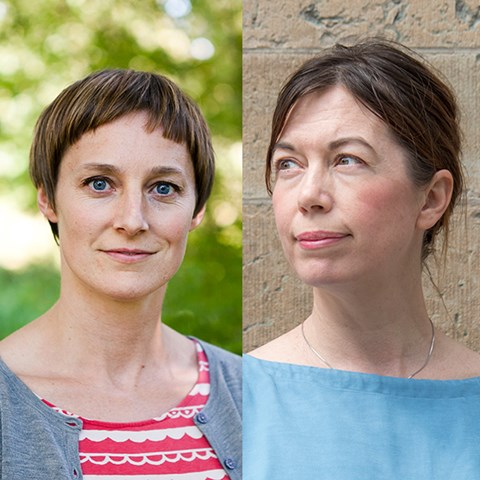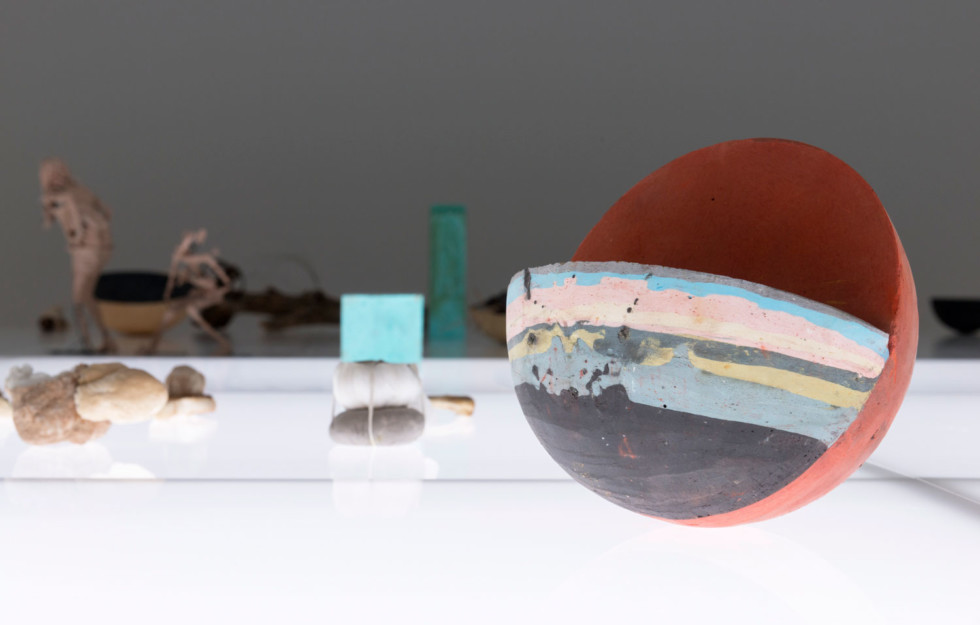Contact
Hanna Bergeå, researcher at the Department of Urban and Rural Development; Division of Environmental Communication, SLU
Tel: +46 18 67 21 82, e-mail: hanna.bergea@slu.se

Museums are places for knowledge and research, a kind of archive and curiosity cabinet. At museums, we can marvel at the diversity of life and the ingenuity of humankind and connect to the eternal questions that are embodied in our common stories and myths.
Blog post written by Ylva Hillström (Moderna Museet) and Hanna Bergeå (SLU).
This is a shortened version in English. Read the full version of the blog post in Swedish.

The scuplture Los Teatros de Saturno III by the Argentine artist Adrián Villar Rojas. Photo: Åsa Lundén/Moderna Museet
In mid-February, Moderna Museet together with the research programme Mistra Environmental Communication arranged the symposium Acclimatize - about role of museums in the transition to a sustainable future. The sculpture Los Teatros de Saturno III by the Argentine artist Adrián Villar Rojas (see picture) may illustrate this role: The sculpture consists of a podium on which a collection of strange objects is presented in bright light. These are hybrids between organic material and things that humans have left behind, such as caps and sneakers. In the age of humankind, the Anthropocene, the human being is inextricably linked with nature. Villar Rojas’ work challenges the idea of humanity as the measure of everything. In addition, questions are raised about who has access to the museum. The podium is so high that only those who are of average height or taller can see the work. Through his work, Villar Rojas highlights the mechanisms of exclusion that are at work in a museum.
At the Acclimatize symposium, Jonna Bornemark, professor of philosophy at Södertörn University College, spoke about how the climate crisis gives rise to collective existential anxiety. This collective anxiety shows that there is a "we" beyond the polarization that characterizes the present, beyond the polarization that Villar Rojas' work points to. This ‘we’ does not only include humans, but belongs to all living things. Bornemark also touches on the 15th century philosopher Nicolaus Cusanus' concepts of ratio and intellectus. Intellectus is the ability to relate to horizons of ignorance, of ‘not-knowing’. It is the ability that allows us to think about what is important in life and how we can create change. This ability is fundamental when we are facing a crisis. Ratio wants to arrange and measure, but does not ask what is important. That question must instead be answered by intellectus, which contains emotions and what can be called artistic sensing. We need to dare to consider that there are things that are important to us humans, even if these cannot be known and systematized – and this is a task for the arts.
The questions that art asks lead to societies being transformed. In this way, art has a societal benefit, although it is not only instrumental: Instrumental art remains within the ratio, and does not raise new questions. Here, we can draw parallels to the role given to research, in a time characterized by an increased awareness of crisis and struggles over sustainability issues. Do we too often limit research to mapping what we already know? Can, and should, researchers push the boundaries within which the critical questions of our time are being addressed, maybe with the help of insights developed through art?
Mistra Environmental Communication has the ambition to bring together science, art, culture and society in a joint effort for a sustainable society. Those – or rather, we – who are involved in this have different perspectives and can contribute in different ways, and it is precisely this that creates the opportunity for us to become a place where both ratio and intellectus are given space. The Acclimatize symposium was a way of bringing art, culture and science together, and of thinking and working together on these issues, an example of what in the programme is called a think/do tank. This format in itself creates opportunities to challenge the habitual ways in which we address sustainability issues.
Museums, with their rich collections and their function as a meeting place and arena, have the potential to put visitors in touch with eternal questions of humankind. To make space for horizons of ‘not-knowing’. To let us meet ourselves and each other and ask new questions. Let's develop that potential.
Hanna Bergeå, researcher at the Department of Urban and Rural Development; Division of Environmental Communication, SLU
Tel: +46 18 67 21 82, e-mail: hanna.bergea@slu.se